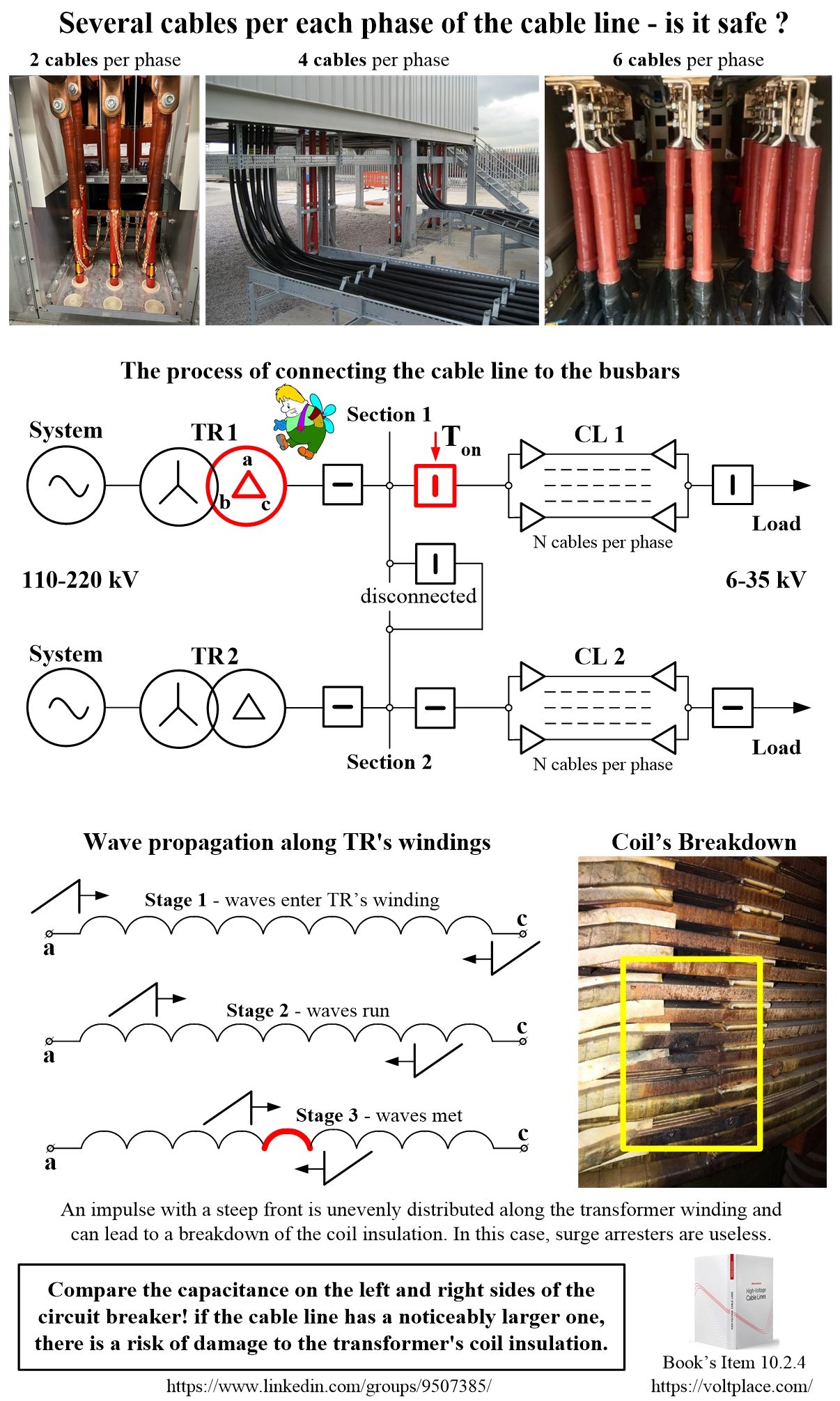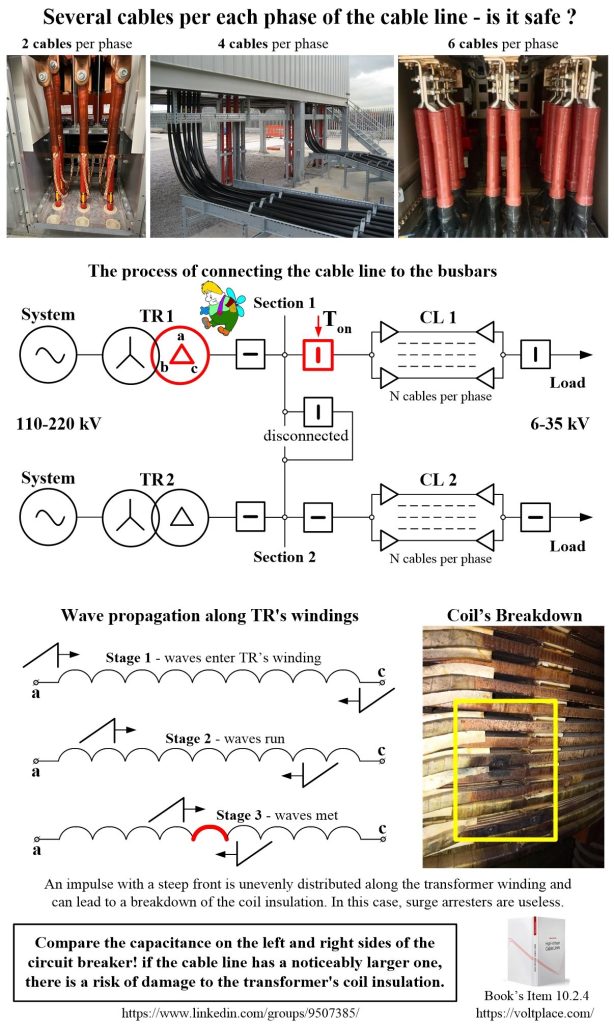
Several cables per phase – is it safe?
Usually a cable line has one cable (one core) for each of the three phases A,B,C. However, there are cases where the number of cables per phase increases up to 6 (see photo) or even more. This may be necessary, for example, so that the line can pass the entire operating current of the supply power transformer (see TR1 and CL1).
In this case, parallel cables are connected to the same circuit breaker. That is, we are talking about exactly one line with several cables for each phase. This case should not be confused with multi-circuit line, which we will discuss in some future post. What could be the negative effects of several cables per phase?

If you calculate the total capacitance of a cable line, taking into account its length and the number of cables per phase, then it can be of a great value. For example, a 5 km long line with 6 cables per phase will be equivalent in capacitance to a conventional 30 km long cable line. This is a very long length of AC cable lines. But the problem is also that such a line has a very low equivalent surge impedance (Zeqv=Z/N, where Z=10-30 Ohm is an impedance of one cable, and N is the number of cables per phase).
Turning on such a capacitance using a breaker (moment Ton) will cause a charging current to flow from the system through the transformer into the line, which will try to charge the capacitance to the normal phase voltage. If we have several cables per phase, then, due to the reduced surge impedance of the line Zeqv, we have a charging current of up to 5 kA. Such a current will be perceived by the busbars as a short circuit, which means that the voltage on the busbars will drop from nominal to zero at the time Ton of connecting the line.
As a result, we have absolutely steep voltage cut in phases a,b,c (the vertices of the triangle) from normal phase to zero. This will cause a process in the transformer windings, fraught with breakdown of the coil insulation in the middle part of the winding. Thus, switching a cable line with a several cables per phase can damage the supply transformer.
Please allow me to draw your attention once again – the problem is not only in the increase of total capacitance of the line, but also that such a line has a very low surge impedance Zeqv.
What should we do?
✅ Try to avoid multiple cables per phase, especially if the line is long (say, more than 1 km).
✅ If we need a lot of cables per phase, then, if possible, it is better to divide the cables into groups and put them under different breakers, i.e. switch not all together, but in turn.
✅ Before switching on such lines, it is better to close the breaker between sections 1 and 2 of the switchgear, since in this case we increase the equivalent capacitance connected to the busbars, and thereby reduce the effect of connecting any new line.
✅ Use RC-devices to protect transformer (surge arresters, unfortunately, are useless here).
Please read Item 10.2.4 of the book “High Voltage Cable Lines“.
